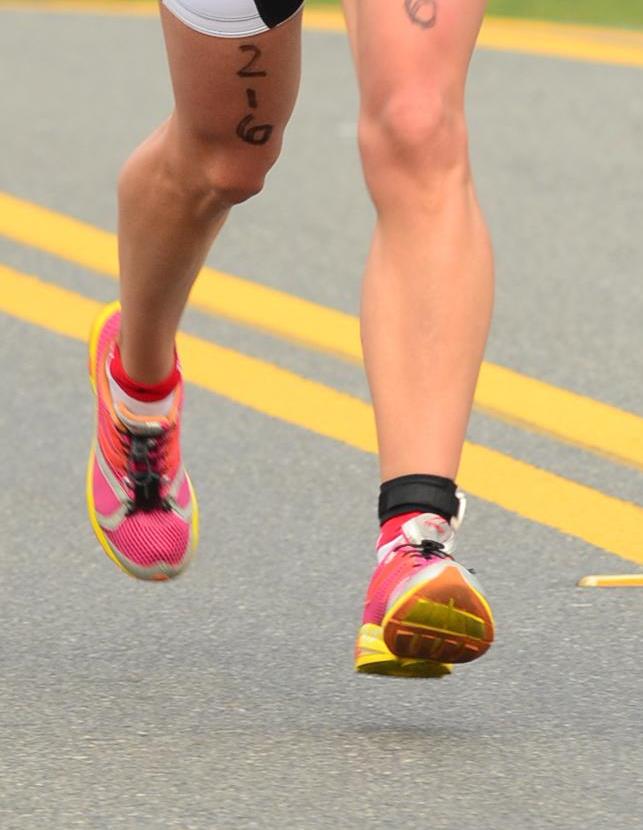The Most Neglected Ironman Training is your mind
Posted by Matt Russ on 29th Jun 2018
 "You don't run fast in an Ironman" chimed one of my athletes. That may be true for some athletes but not the pros, they run at paces that exceed most athletes 5 and 10k race paces. This does not mean they are running all out, it just means that they are exceeding fit and efficient runners. What does efficiency mean when it comes to running? To name just a few things...
"You don't run fast in an Ironman" chimed one of my athletes. That may be true for some athletes but not the pros, they run at paces that exceed most athletes 5 and 10k race paces. This does not mean they are running all out, it just means that they are exceeding fit and efficient runners. What does efficiency mean when it comes to running? To name just a few things...
- They spend more time in the air and less on the ground
- Their is minimal braking forces when on the ground
- Their stride rates are higher
- They are projecting more energy in a forward manner
After an athlete has been competing in Ironman for a few seasons or more, I often hear them lament that their run has plateaued while their bike or swim continues to show marked improvement. In many cases, especially with seasoned athletes, their run has reached its physical limit. At this point they can throw hours and miles at their run and see limited improvement. In fact it may even be degrading their run split. But what can change is their efficiency and most athletes never address this very important aspect of training.
There are a great number of things that can be improved upon such as vertical oscillation, arm motion, body position and posture, knee drive, etc.. It is a detailed and long term process not unlike swimming, and it involves coaching and high level feedback. But there is a good place to get started and that is improving neuromuscular firing, which is a fancy way to say teaching your legs to move faster and spend less time on the ground; and this can be done relatively easily.
If your run split is lagging your feet are spending too much time on the ground. Efficient runners spend the vast majority of their time in the air with as little as .10 of a second on the ground. Their stride rate also remains fairly consistent whether they are running a 5k or a Marathon. What does change is stride length and force of contraction but the legs move at a consistent rate. Step 1 is feel the sensation of spending less time on the ground with contact drills such as ladder drills or foot speed drills. The first thing an athlete notices is that they naturally get up on their forefoot, which greatly limits contact time. This is not necessarily how you should run but you get the feel of what it is like to get off the ground quickly. Performing a simple ladder drills feels like they are tripping over their feet- because they are not used to moving their legs quickly. A slow runner usually has a low stride rate and a lot of braking forces in their stride; this removes those inefficiencies instantly because they can't perform the drill without removing them. There are hundreds of examples of foot speed drills online or you can visit our YouTube page for some examples.
Through speed training you will develop proprioception, or a body awareness of better efficiency. I like to start here because it is relatively simple; you just move a bit faster, and then try to beat your time. This type of training does not take a lot of time either, in fact it is best performed in short sessions very regularly. It makes for a great warmup as long as you don't jump into it too quickly, and sets a neuromuscular "groove" for your run. This is why you see elite runners performing these drills even before a marathon.
Remaking your running form is not necessarily something you want to do in a peaking phase but this type of training should not confuse your running style. It is about feel, and then applying this feel to your form. Again, this is simply a first step on a long journey but if you completely neglect your run efficiency do not expect a large improvement in your run split- or perhaps any at all. You can put a world class runner in a pool and they will be as slow as any beginner. Swimming begins with efficiency and everyone knows you can't improve without learning to swim. You don't start by training your swim. If you apply just a bit of this mentality and training to your run it just may be the break through you have been hoping for.


